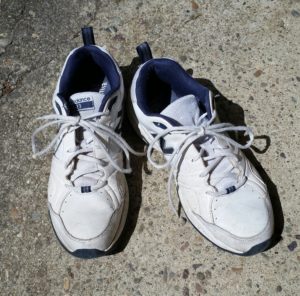Something to think about if you are considering fathering a child.From Medical Xpress:
Study links ultraviolet filters to pregnancy delays
Certain sunscreen chemicals used to protect against ultraviolent rays may impair men's ability to father children in a timely manner, according to a study by the National Institutes of Health and the New York state Department of Health's Wadsworth Center. But the researchers caution that the results are preliminary and that additional studies are needed to confirm their findings.
Benzophenone (BP)-type ultraviolet (UV) filters comprise a class of about 29 chemicals commonly used, among other purposes, in sunscreens and other personal care products to protect skin and hair from sun damage. Some of these chemicals, upon being absorbed by the skin, can interfere with the body's hormones and endocrine system processes. Researchers found that men with high exposure to UV filters BP-2 or 4OH-BP had a 30 percent reduction in fecundity, the biological ability to reproduce. Lower fecundity may result in a longer time to pregnancy.
"In our study, male fecundity seems to be more susceptible to these chemicals than female fecundity. The women participants actually had greater exposure to the UV filters overall, but their exposure wasn't associated with any significant pregnancy delays," said Germaine Louis, Ph.D., director of the Division of Intramural Population Health Research at the Eunice Kennedy Shriver National Institute of Child Health and Human Development.
The researchers studied 501 couples that were trying to conceive a child. The couples were part of the Longitudinal Investigation of Fertility and the Environment (LIFE) study, established to examine relationships among fertility, lifestyle factors, and exposure to environmental chemicals. Researchers recruited the study participants from 16 counties in Michigan and Texas in 2005 through 2009. The women participants ranged from 18 to 44 years of age, and the men were over 18; none had a medical diagnosis of infertility.
The researchers followed the couples until pregnancy or up to one year of trying, to record the time it took for the women to become pregnant...Their findings suggest that some, but not all, UV filters may be associated with diminished fertility in men, independent of their partners' exposure. The researchers observed effects among men with the highest exposure (the 75th percentile and above) to UV filters BP-2 or 4OH-BP.
"But men who are concerned about fertility may be interested in other ways to reduce their exposure to benzophenone UV filters—whether by cutting back on other products that contain the UV filters or by washing after returning indoors."
Earlier research findings from the LIFE Study have linked reduced fertility to high cholesterol levels in women and couples and to high concentrations of phthalates and Bisphenol A (BPA) in men.

 Research on a burning question for middle-aged men: how to control the belly fat that comes with aging? From Science Daily:
Research on a burning question for middle-aged men: how to control the belly fat that comes with aging? From Science Daily: Once again air pollution is linked to health problems, this time exposure during pregnancy is linked to congenital malformations (what are commonly called birth defects). From Science Daily:
Once again air pollution is linked to health problems, this time exposure during pregnancy is linked to congenital malformations (what are commonly called birth defects). From Science Daily: This robot in the Knight lab can handle many samples simultaneously. To avoid contamination, the lab only processes the same kind of samples at the same time together (fecal with fecal, skin with skin and pet with pet). Credit: Katherine Harmon Courage for NPR
This robot in the Knight lab can handle many samples simultaneously. To avoid contamination, the lab only processes the same kind of samples at the same time together (fecal with fecal, skin with skin and pet with pet). Credit: Katherine Harmon Courage for NPR